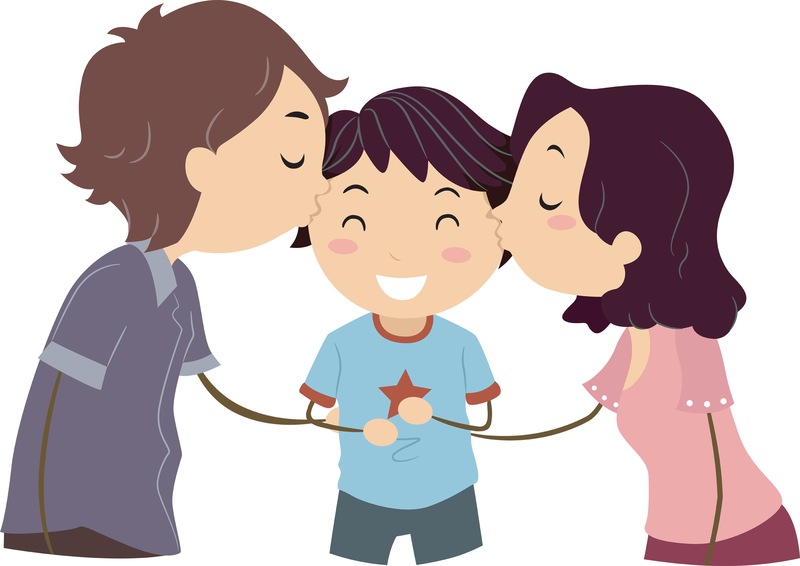- B.F Skinner’s Theory Of Operant Conditioning And Positive Reinforcement
- Types Of Positive Reinforcement
- When Is Positive Reinforcement in Parenting Effective?
- Examples Of Positive Reinforcement For Children
- Benefits For Children
- Positive reinforcement can boost self-confidence
- Positive reinforcement helps motivate children to do better in the future
- Positive reinforcement helps reduce negative behaviours
- Positive reinforcement helps reaffirm that you care about your children
- 5. Positive reinforcement helps build a child’s character
- Final Thoughts
Positive reinforcement involves the introduction of a desirable stimulus after a particular behaviour. The stimulus reinforces the behaviour, ensuring that it will occur again.
One can use positive reinforcement for a variety of purposes. Positive reinforcement in parenting and pedagogy is an excellent tool to teach children good behaviour. Parents can use this technique to teach obedience without the use of threats, punishment, abuse, shame, or humiliation.
In this article, we will discuss positive reinforcement in detail. In addition, we will talk about its benefits and a few examples you can use at home with your kids.
B.F Skinner’s Theory Of Operant Conditioning And Positive Reinforcement
In 1937, renowned psychologist B.F Skinner proposed the term operant conditioning, which refers to using punishment and rewards for learning behaviour.
Positive reinforcement is introduced in Skinner’s theory of operant conditioning. In positive reinforcement, a behaviour or response strengthened by rewards causes the repetition of the desired behaviour.

Skinner proved this theory by using a hungry rat in the Skinner box. The box had a lever that would cause a food pellet to drop in the box when pressed. After a few runs, the rats began to go straight to the lever. Receiving food every time they pressed the lever reinforced the behaviour.
The model defined by Skinner describes three more methods of conditioning. They are,
Positive punishment: Introducing a pleasant stimulus to prevent the behavior.
Negative punishment: Removing a desirable stimulus dissuades the behavior.
Negative reinforcement: It is where an undesirable stimulus encourages the response.
Types Of Positive Reinforcement
Positive reinforcement is of four types, differentiated by the type of positive stimulus or reinforcer used.
Natural reinforcers
Natural Reinforcers are those that happen directly as a result of the behavior. For example, a student who studies hard for an exam is motivated good grades.
Tangible reinforcers
Tangible Reinforcers are reinforcers that give physical rewards. For example, a child who receives money or treats for completing chores.
Social Reinforcers
Social refers to those that involve expressing their approval of a behavior. For example, when a teacher or parent complements a child.
Token Reinforcers
Token reinforcers are given for performing some behaviours. Children can swap it for something of value. For example, a reward system where the child earns stars for good behaviour in class which they can exchange for a reward.
While social and natural reinforcers are most effective, token reinforcers can be more useful with young children.
When Is Positive Reinforcement in Parenting Effective?
Firstly, positive reinforcements are effective when it happens immediately after the behaviour. A short time between behaviour and reinforcement makes the connection between the two stronger. This, as a result, helps engrave the behaviour in the child’s brain. Therefore, the longer the time between the two, the more likely it is to reinforce the wrong behaviour.

Secondly, parents must give reinforcement enthusiastically and frequently. This determines how strong a response is and how often it occurs.
Examples Of Positive Reinforcement For Children
- Positive reinforcement at home by parents
- Giving an allowance to motivate children to complete their chores
- Praising children for completing tasks without being asked. This encourages children to want to do it again to win more approval.
- Awarding your child for a good performance in an exam

2. Positive reinforcement in the classroom by the teacher
- Awarding students stars for good behaviour.
- Students who volunteer to clean the classroom can get cookies and hot cocoa afterwards.
- Lastly, the class can be rewarded with free periods or a longer recess when all students pass a test.
Benefits For Children
Positive reinforcement can boost self-confidence
When a parent praises their child for doing something right, they gain confidence and tend to not second-guess themselves. Furthermore, the kids begin to rely more on their own capabilities.
Positive reinforcement helps motivate children to do better in the future
Kids are constantly learning new things. Hence, positive reinforcement encourages them to keep striving to achieve their goals. Words of affirmation when a child is sad or feeling down can help parents guide their kids down the right path. Thus, children also learn to see things in a more positive light, rather than dwelling on negative thoughts.
Positive reinforcement helps reduce negative behaviours
With positive reinforcement in parenting, children come to realize that they get praise or rewards for good behaviour. On the other hand, they might land in a timeout for doing something bad. As a result, this teaches children which types of behaviours lead to positive reinforcement, and they begin to learn good habits.
Positive reinforcement helps reaffirm that you care about your children
Children want approval from their parents. They want to know that their parents are paying attention and are interested in what their kids are doing. When parents take time to tell their kids how proud they are of their behaviour, the children will feel the pride and love parents have for them.
5. Positive reinforcement helps build a child’s character
Children who are driven by fear of punishment put in minimum effort to avoid being punished. However, positive reinforcement helps children understand that good behaviour results in positive consequences, thus, teaching them the value of personal responsibility and self-discipline.
Final Thoughts
As parents, it is your job to teach your kids discipline and good behaviour. However, this does not mean that discipline should involve harsh disciplinary measures. Furthermore, if you want a better response from your little one, use positive reinforcement techniques when completing a task.
Positive reinforcement can provide long-term benefits as it positively impacts a child. On the other hand, trying to change your child’s behaviour by instilling anxiety or fear may result in negative feelings that they may carry as they grow up.
If done improperly, positive reinforcement can be detrimental. If the wrong behaviour is reinforced it could greatly impact the child in the future. Hence, parents must offer rewards quickly and for the appropriate behaviour to ensure the positive development of a child.
Meanwhile, check out our latest update on How to Raise Your Child to Be a Reader! Even more awaits you on the Podium Blog, where you can read the latest and the best parenting advice tidbits, children’s films, and book recommendations, classical dance knowledge soup, and more!
Share with your friends





